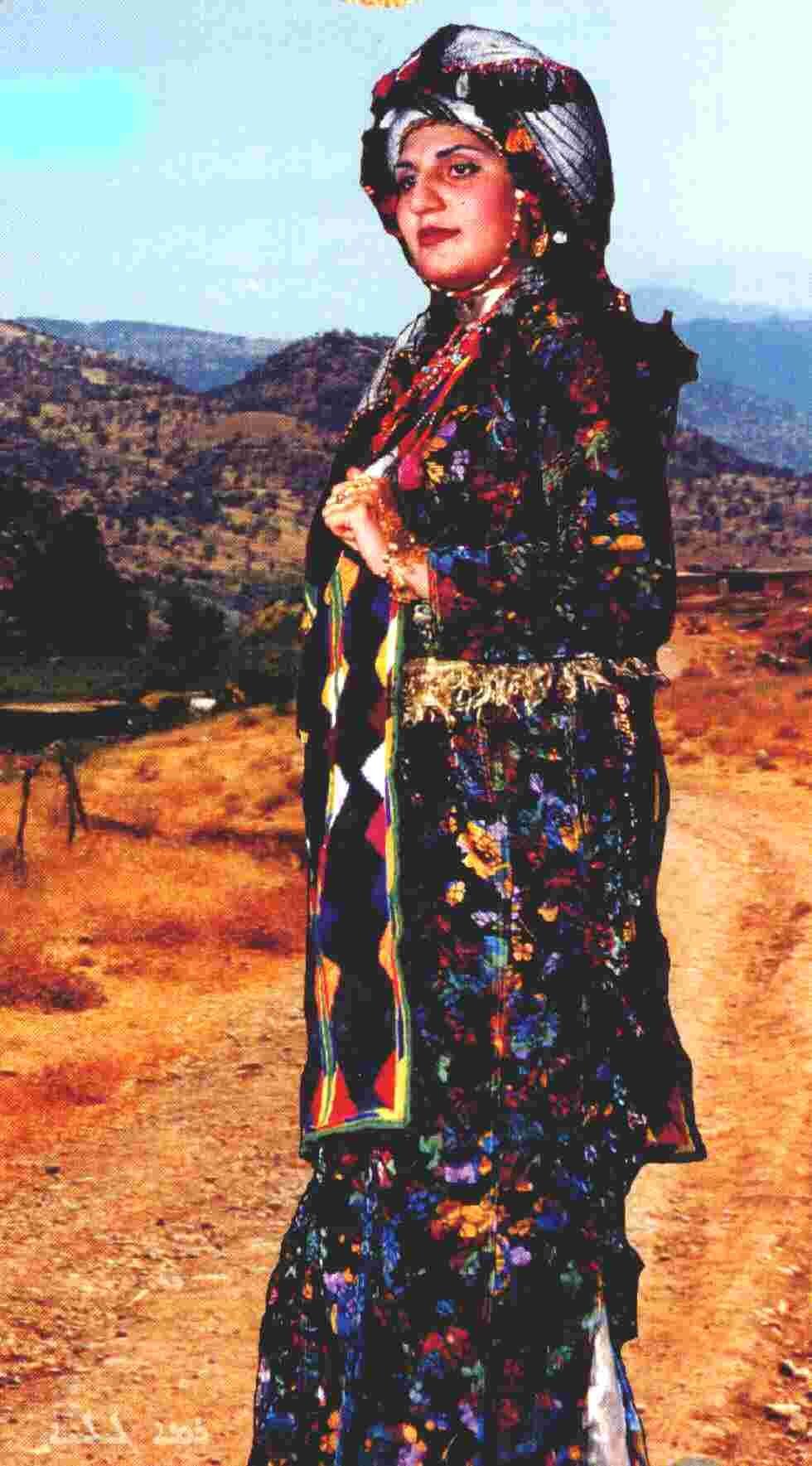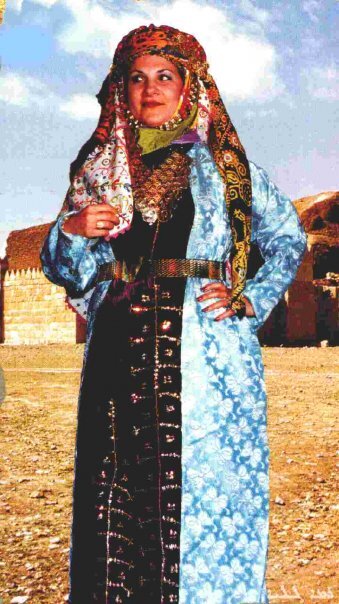Traditional Costumes from Christian Villages in Iraq
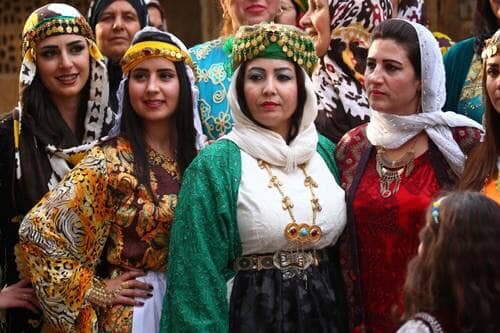
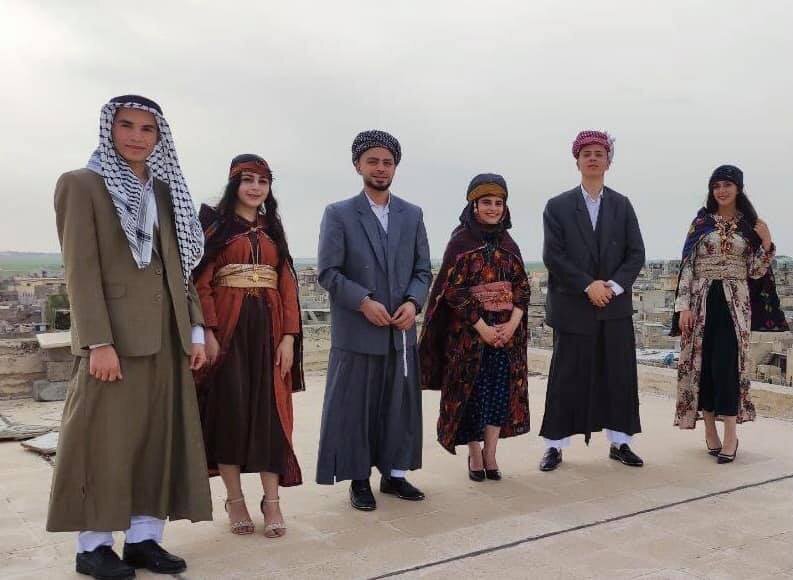
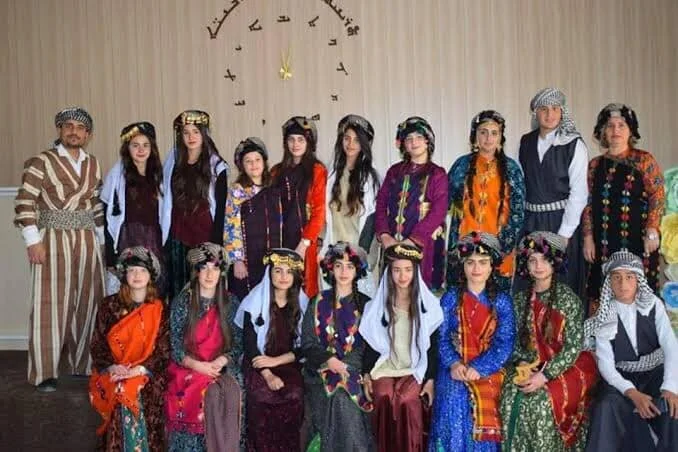
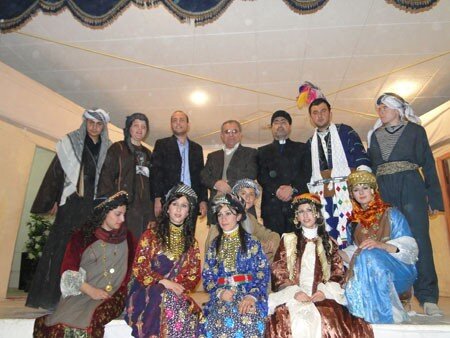
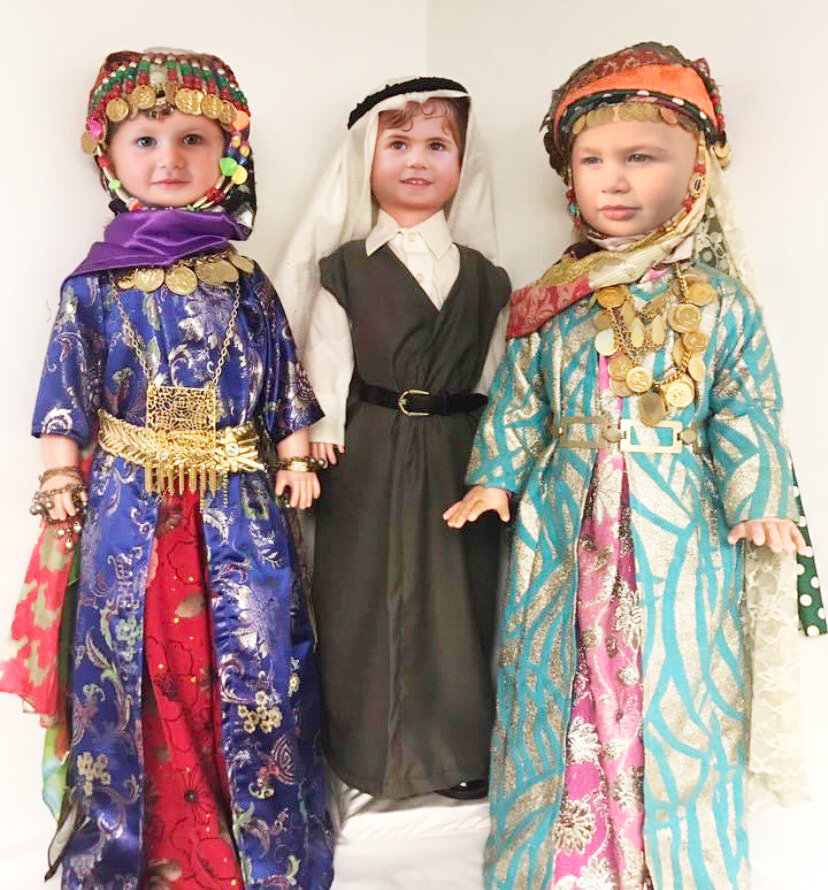
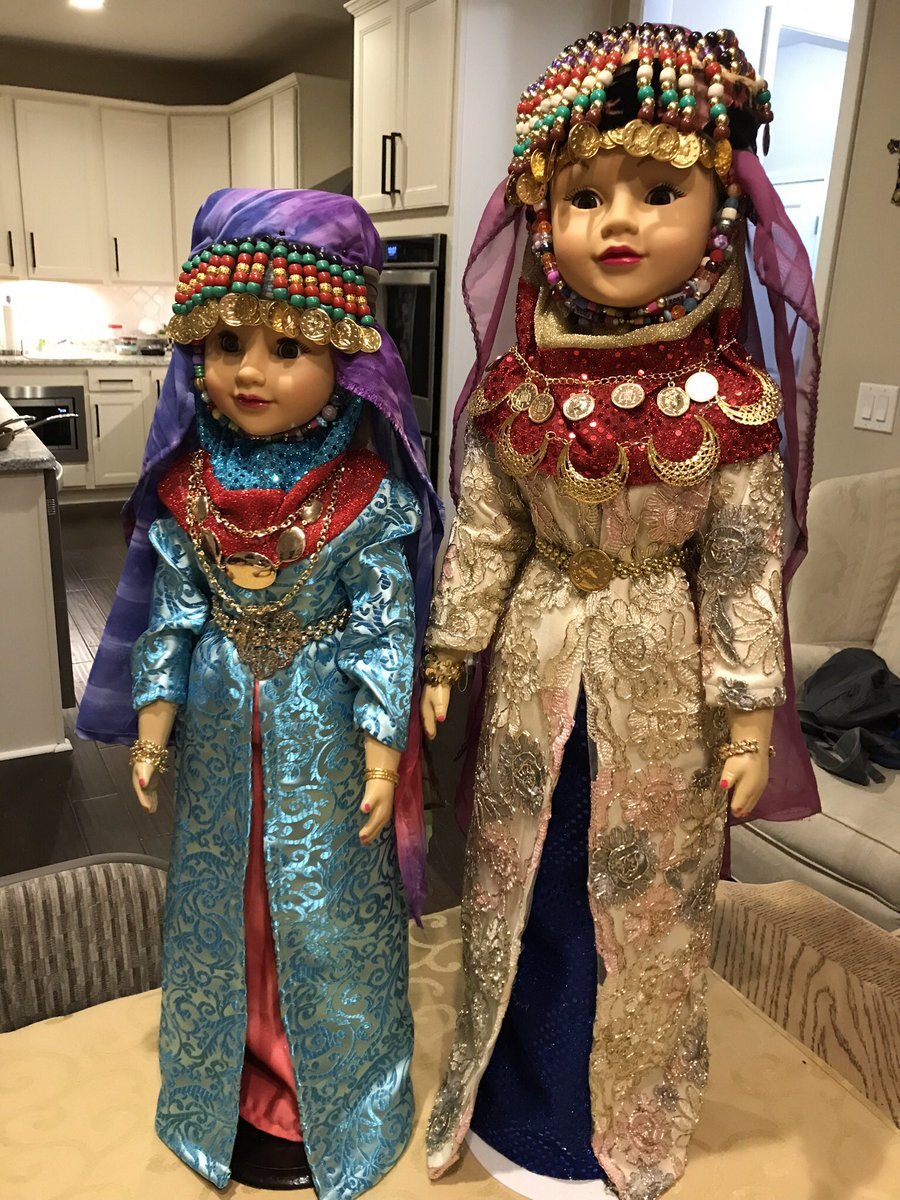
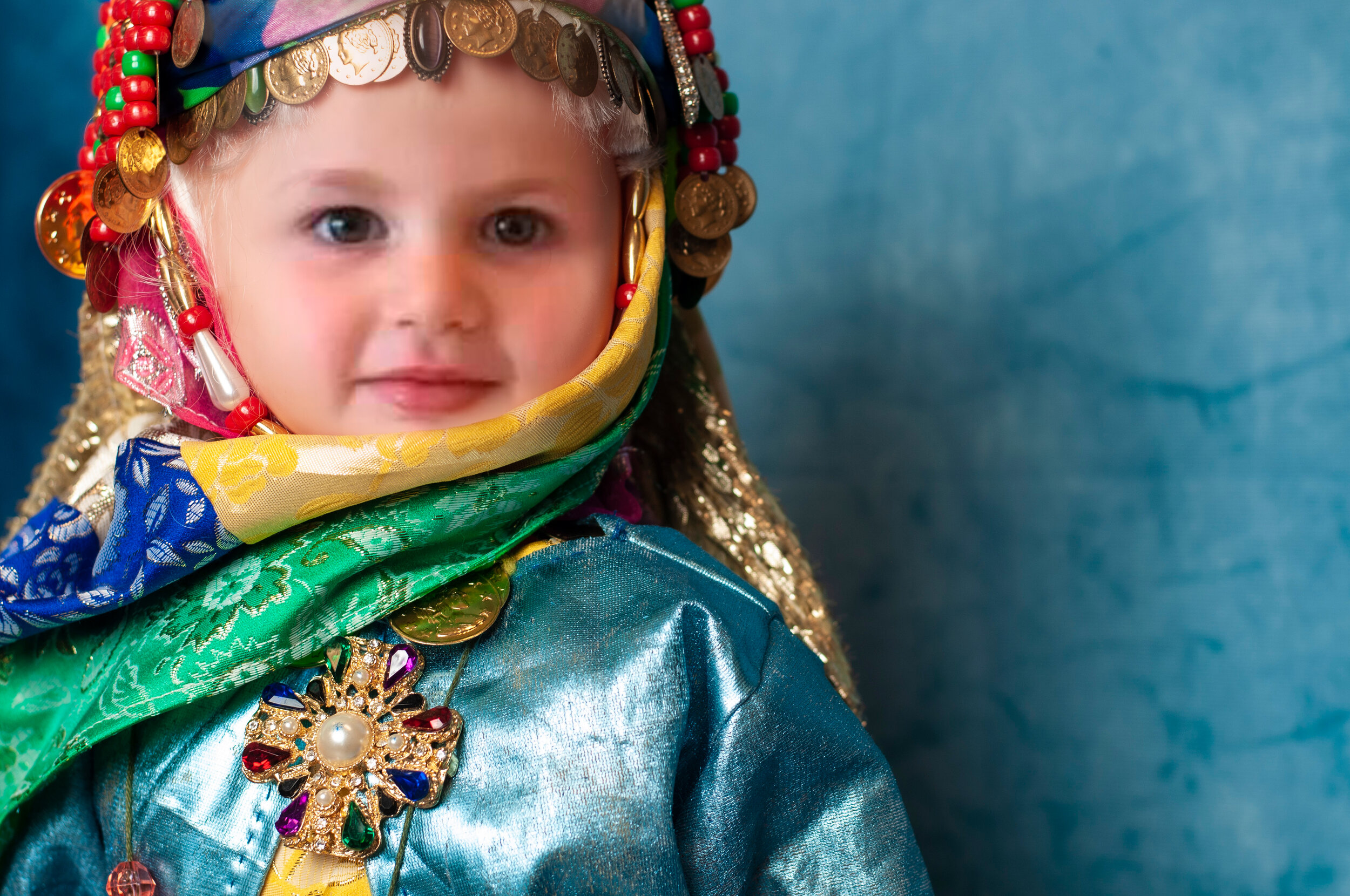
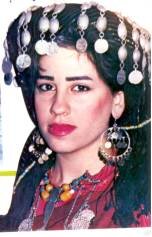
by Dr. Adhid Miri
Each nation around the world has a specific history that is exclusive to them; an integral part of this heritage is the traditional costumes they wear, which vary from village to village and express their unique identity. Fashion plays an important role in setting each village apart.
It is said that the oldest inscriptions and embellishments carved on leather clothing were found in the caves of the Negev Desert in southern Israel. According to historians, the art of embroidery, inscription and decoration of adornment belongs to the Canaanites, who were inspired from organic designs in nature. Fashion was a way of life for these people, not only representing their cultural beliefs but a way of communicating with the world.
Accounts of the cultural dress of the first civilization in recorded history, Mesopotamia, have long since disappeared. However, through the traditional clothing of villages in Iraq, we see traces of that civilization. In fact, many researchers, historians, and artists throughout history relied on studying ancient Babylonian/Chaldean/Assyrian fashion for inspiration. There is no doubt that the Assyrian costumes developed from those of Babylonia. Evidence of that can be found in the ancient archaeological paintings of costumes from the Babylonian era.
The clothes of the modern Chaldean-Assyrian era are characterized by inlaid decorative pieces different from the original cloth. The method commonly used is known as Al-Takhreej, which is the use of overlapping geometric shapes such as circles, squares, and rectangles, as well as the use of flowers and stars.
This method is still popular in modern design, as traditional clothes of Chaldeans/Assyrians today usually consist of a long-sleeved dress with multiple layers of clothing, such as the head cover, which varies from one group to another. The influence of previous fashions is present in the traditional clothes that are still worn throughout Iraq, especially in the Chaldean/Assyrian villages.
As stated before, Chaldean clothing varies from village to village. However, they have some things in common, such as the colors, which are usually blue, red, green, yellow, and purple; these colors are also used as embroidery on white cloth.
Decoration is lavish in Chaldean costumes, and sometimes involves jewelry. The conical hats of traditional Chaldean dress have changed little over the millennia from those worn in ancient Mesopotamia; until the 19th and early 20th centuries, the Mesopotamian tradition of braiding or plaiting of hair, beards and moustaches was still commonplace.
Chaldean women’s clothing has a special collection of colors, reflective of the colors found in nature. The dress is long, with long sleeves called Qabaya. This outer dress is transparent, adorned with soft and brightly colored silk threads and embroidered with beads, blocks and shining miniatures. An under layer called the Fistan is at times without sleeves, and it is usually of a special type of thick fabric. The Fistan is completely covered with bright threads to add more luster to the entire outfit.
The dress is worn with long pants, called Sharwal, that reach the ankle. This pant has traditionally been loose and wide, but in the past few years it has become narrower.
The head covering usually consists of two pieces. The first part is either made of a special cloth called Ha-Wari or in the form of a fez called Tarboush, decorated with gold or silver accessories and linked to a gold or silver chain wrapped around the neck.
The second piece of the head cover consists of a square-shaped piece of cloth that is placed around the neck, dangling forward, and tied with shiny prism threads or fastened with a gold or silver pin. This piece reaches below the waist.
The women’s outfit is typically accompanied by accessories. Middle Eastern women are known for their fondness and love for gold, so they are masterful in finding the necessary accessories for this outfit, such as belts, necklaces, earrings, wrist chains and rings. Each accessory has their own name as well.
Shoes for men are called Klash and are handmade of soft silk and cotton threads.
All pieces have a functionality to them. Fashion was only possible if it was practical because of the high work demands of farming and herding in those regions. For example, the belt has many benefits and uses, including that it tightens the abdominal and back muscles when performing difficult and arduous work, especially when climbing high mountains. The most important benefit lies in carrying the dagger, the pistol, and the gear, in addition to its beauty in completing the lady’s uniform.
The Syriac woman is distinguished from the Kurdish by wearing a special turban. It is clear, according to the archaeological paintings, that northern costumes are mainly inherited from the Assyrian costumes in ancient Iraq.
Now that we’ve covered the basics, let’s look at individual villages.
Telkeppe (Tel Kaif)
Telkeppe is a town in northern Iraq located in the Nineveh Governorate, less than 8 miles northeast of Mosul. The town was majority Chaldean until ISIS took it over, prompting many to flee. Most of the Iraqi refugees in Michigan came from this area.
The costumes of Tel Kaif women have changed radically in recent years, beginning around 1950. Previously, women wore a long dress that fell to the bottom of the feet, topped by a colorful apron called a Maizer, made by local manufacturers. On occasion, the Maizer was placed on the head rather than the shoulders.
The ladies also wear a silver belt around the waist and usually cover their heads with a handkerchief-like cloth that is wrapped and held in a special way. Some use a large, decorated handkerchief for the head covering with long silk threads dangling and hanging from all sides called the Qassabiya. This is something special and usually used only when going to church.
The head piece consists of a bowl type cover made of a light material that only weighs about a few ounces. Two small horns emerge from the top of the bowl that help affix and support the handkerchiefs from above. The bowl is tied to the head by means of a white handkerchief held under the chin.
Other ornate and brightly colored covers are added to the handkerchief and gold coins are attached to the forehead. The sides include two strings of pea-sized gemstones of turquoise, agate, and coral, hanging by the cheek among additional gold pieces. Some put gold or silver necklaces around their necks and wear gold or silver bracelets, rings, and earrings. The oldest community members remember that women used to wear gold jewelry pieces called Khizama on the lower side of their noses.
The traditional dress for men in Tel Kaif was the Zibon, which is a long over-dress diagonally open in the front and complemented by a head cloth covering the shoulders called a Kattafat.
The textile/fabric, called Al-Kisrwan, was usually brought from the Kurdish city of Si’irt in southeastern Turkey. At the beginning of the last century, the men’s head piece was replaced by the popular Arab white fabric called Yashmagh. Most men continue to use the Yashmagh or the black and white fishnet styled Kuffiyeh; the cloth piece is firmly fixed on the head by the black double ring called Iqal.
Alqoush
Alqosh is a village in the Nineveh Plains of northern Iraq, a sub-district of the Tel Kaif District situated 45 kilometers north of the city of Mosul.
The traditional women’s dress of Alqosh consists of a head covering piece called Pushiya, carefully woven from silk threads and silk fabric, the edges of which are ended with a fringed knot Kambuchiatha and decorated with white and red beads that adorn the forehead called Khazrani.
These Khazrani are made of ten gold old Turkish Lira (Ottoman coins) on each side of the forehead with a large center gold piece called a Natopa.
The dome of the head piece is adorned with a Gurdana, a collar of fabric decorated with ornaments of spherical, oval, or spindle shapes that hang on the neck and end with golden berets, and Keratha or Tarboushiyatha.
The final piece is a Qabaya, worn over the inner-dress/shirt Al-Shouqtta. The waist is wrapped and a shawl with embroidered edges and prominent inscriptions, called a Maizer, is worn above the shoulders and hangs from the front.
The traditional men’s costume consists of a head covering of two Jamdanies or large fabric handkerchiefs. It is characterized by a sleeved robe or Sisukiyatha, which starts from the elbows and wraps around the forearms of the hands. It is usually white and bound by a belt called a Shibaga.
Batnaya, Baqoofa and Tesqopa
Batnaya is a village in Nineveh Governorate in the Tel Kaif District in the Nineveh Plains. The villages hosts the Chaldean Catholic churches of Mar Quriaqos and Mart Maryam. The Mar Oraha Monastery is located nearby.
Baqofa is another small village in Nineveh Governorate. Its inhabitants are Chaldeans who speak Neo-Aramaic and adhere to the Chaldean Catholic Church. Tesqopa or Tel Eskof is a Chaldean town in northern Iraq located approximately 19 miles north of Mosul. The town costumes are similar to the neighboring villages of Batnaya and Baqoofa.
Women in these villages wear the under-dress, Shouqtta, below the Qabaya, with long and open necks in the front and sometimes both sides as well. The clothing is of bright colors and the belts, Jar-ali, have gilded edges and are woven from silk threads and silk fabric.
The shawl, Maizer, is embroidered in bright colors with different shapes and knots from the top of the left shoulder, wrapping around the body and covering the back.
The head is covered with a fringed necklace adorned with golden bells and colored beads. Along the neck, it is adorned with golden accessories, and is usually accompanied by earrings called Turkitha.
The traditional dress for men in these villages is similar to the ones in Tel Kaif that include the Zibon complemented by a headcloth covering the shoulders.
The head cover consists of a Kuffiya and an Agal (or Iqal) which is an accessory traditionally made of goat hair. It is a black hoop of a ringed cord, worn doubled, serving to keep the Kuffiya in place on the wearer’s head.
The Kuffiya, also known in Arabic as a Ghutrah, Shemagh, or Chafiyeh, is a traditional Middle Eastern headdress. It is fashioned from a square scarf and is usually made of cotton. A Ghutrah differs from the fish net Kuffiya and the Shemagh in its pattern and cloth. It is completely white and a slightly thinner cloth than the others.
The Ghutra, being white, reflects much of the sunshine and with it, the heat. Wearing a white Ghutra is more comfortable, especially if you live in a city with intense sunshine.
A white Thawb (Qamees or Dishdasha) is an ankle-length robe-like garment, usually with long sleeves. Worn by the men of the villages, it is tied loosely or fastened around the waist with a leather belt. The wearing of traditional clothing is supported by a dark colored long outer gown.
Summary
By now it should be apparent that each village in northern Iraq has its own style. Just noticing small details like what is worn and where it is worn can help identify which village the wearer hails from.
Sources: Traditional Dresses by Najat Habash; Telkeppe — Past and Present by Fr. Michael J. Bazzi; Alqoush- Special Anthropology and Cultural Study by Habib Yousif Tommi; and Ankawa in the Memory of its People by Farouq Hanna Atto Happi. Special editing by Shatha Najim.

